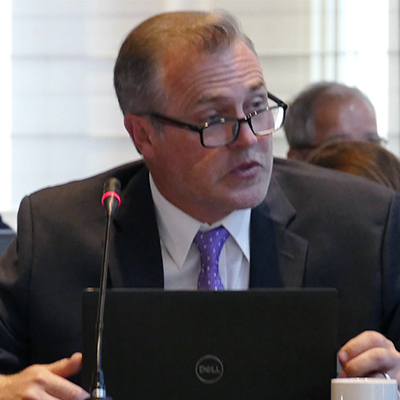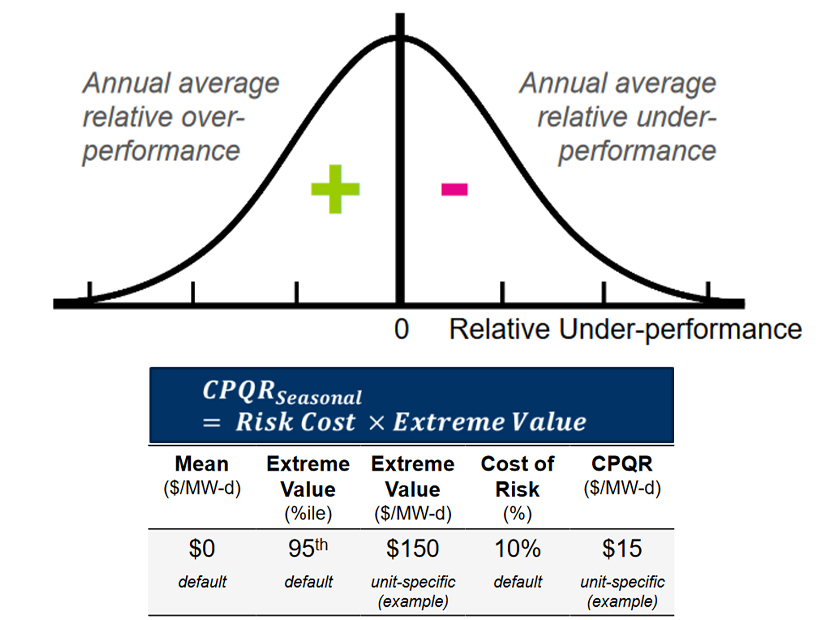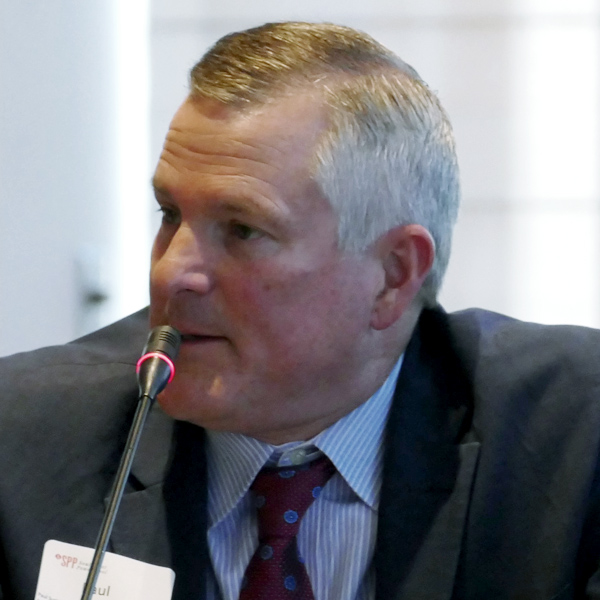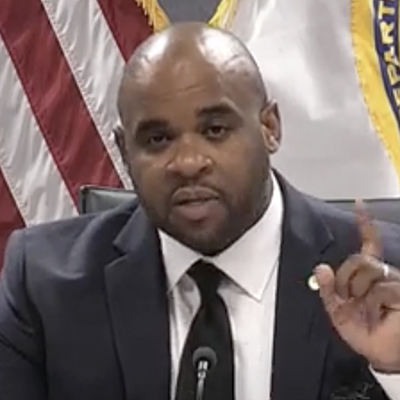ST. PAUL, Minn. — SPP’s Board of Directors and its state regulators last week endorsed congestion-hedging improvements that have been years in the making, accepting staff’s recommendation to approve a package of eight proposals designed to increase equity, fairness and financial transmission rights awards among market participants.
Three of the proposals are meant to improve equity by modifying: the long-term congestion rights (LTCRs) second round’s nomination capacity from 100% to an incremental percentage up to 100%; the nomination capacity calculation for the first round of the annual auction revenue rights (ARRs) to better allocation ARRs; and the ARR’s first round nomination capacity from 50% to an incremental percentage up to 50%.
Three other proposals will update load modeling and generator modeling to better align with transmission service studied and coordinate with transmission planning to review firm transmission assumptions used in the planning process. A seventh sets up stakeholder education to explain how existing tools can increase awards.
The distribution of excess auction revenue proved to be the sticking point before staff and the Regional State Commission’s Cost Allocation Working Group (CAWG), comprised of regulatory staff, agreed on a phased-in approach that provides equity in congestion rent for firm rights to transmission paths.
Recommendation No. 5, owing to its place on the list, will distribute excess ARR awards using a nomination cap-minus award method that considers only LTCRs and annual ARRs from the first two auction rounds and monthly ARRs from the first iteration. The first year will use 50% of the current distribution method and 50% of the new method, with the latter accounting for all distributions going forward.
The methodology, proposed by Evergy, does not consider congestion’s value on non-hedged firm transmission rights and benefits participants with non-congested and counter-flow firm rights.
SPP’s Market Monitoring Unit (MMU) weighed in on the debate, supporting staff’s recommendation for No. 5 that considers congestion’s value on firm transmission rights not hedged through the allocation process and calls for a third round of ARR nominations. It said the Evergy proposal was an incremental improvement to the current process, while staff’s proposal creates three times more equity over the current process.
Congestion-hedging improvements were one of 21 proposals brought forth by the Holistic Integrated Tariff Team and approved by the board in 2019. Staff first pushed for optimizing the flow of energy in a direction that results in a charge to the transmission congestion rights (TCRs) holder, or counter flow optimization, to address concerns about how TCRs are awarded and the efficiency of the current process. However, it never gained traction in the stakeholder process and eventually was replaced last year by a hybrid approach that focuses first on equitably allocating the congestion rights instruments and then increases the pool of awards available. (See SPP Congestion-hedging Recommendations Gain Traction.)
The package did not include a recommendation to give more opportunities for all market participants to receive long-term congestion rights. CAWG and staff are working together in considering load-serving entities’ ability to request and obtain LTCRs, making the awards finite and adding capacity factors and/or accredited capacity requirements to candidate LTCRs.
The topic was the primary reason the package drew opposition from renewable energy interests during the Members Committee’s advisory vote for the board, which passed 16-6 with one abstention. EDP Renewables’ David Mindham said transmission customers still are faced with a “major” equity issue when trying to deliver power through their transmission service.
“We enter those agreements willingly and most of my colleagues are looking to shed those agreements as quickly as possible,” he said, “as SPP has a strategic priority to optimize seams. Without issue No. 1 being part of the discussion, there is a major incentive for us to not wheel power associated with a major carrier that doesn’t align with the strategic priorities of SPP.”
Arguing that “perfection should not be the enemy of the good,” SPP’s Antoine Lucas, vice president of markets, said the nine recommendations will make “notable progress” with financial transmission rights.
“I still believe that recommendation one will have the most significant incremental impact,” he said. “If we’re able to make the progress that I believe that we can make on recommendation one, I believe that the impact or the difference between the two approaches or recommendation five really starts to level out to some degree. I really think it has the ability to bridge that divide.”
The RSC unanimously endorsed the package’s recommendations July 24 after it cleared the CAWG on an 8-4 vote.
General counsel Paul Suskie said staff now can begin turning the package’s eight approved items into revision requests.
Board, RSC Endorse Winter Obligation
The board and RSC also both endorsed a revision request that adds to the tariff a winter resource adequacy requirement for load-responsible entities (LREs) bound by the grid operator’s recent planning reserve margin (PRM) increase.
The measure (RR549) applies the same level of validation, study and assessment requirements to the winter season (December through March) that currently applies to the summer season, including a deficiency payment for capacity shortfalls. It also assigns an annual deficiency payment to prevent duplicate payments for the same capacity within an annual timeframe.
The board approved RR549 although the 23-person Members Committee only gave it 10 concurring votes against nine in dissent and four in abstention. SPP staff normally does not report the results of the directors’ ballots.
David Kelley, SPP’s vice president of engineering, said a winter season obligation is the culmination of a large amount of work by several stakeholder groups. That work now is focused within SPP’s Resource and Energy Adequacy Leadership Team. (See SPP REAL Team Endorses Winter Resource Requirement.)
“This is kind of the first major policy decision that sets the cornerstone for the rest of these policies to be effective,” he said.
“From my perspective, there’s a desire to get going with making the current resource adequacy an actual requirement … that we can hold people accountable to it while we continue to work on other aspects of the policy,” SPP CEO Barbara Sugg said.
The RSC approved the tariff change in a 9-3 vote. The Markets and Operations Policy Committee narrowly approved RR549 earlier in July. (See SPP Markets and Operations Policy Committee Briefs: July 10-11, 2023.)
Western Area Power Administration’s Lloyd Linke, holding a proxy for NorthWestern Energy’s Bleau LaFave, urged delay to give winter-peaking utilities greater clarity in how winter outages will be treated.
“The treatment of outages being the same or similar in the summer season as opposed to the winter season … is such a critical aspect of the whole program for us,” he said. “There is just a strong concern by the winter-peaking utilities that, ‘Yeah, it sounds good. It sounds like everything’s gonna be hunky dory. And we’re going to have the same sort of requirements, summer and winter.’ We just like to see that particularly baked into it initially so that we have some certainty.”
Keith Collins, the MMU’s vice president, repeated the same concerns with RR549 that he expressed during earlier MOPC and RSC meetings. While he supports a winter resource adequacy requirement (RAR), he said that, as written, the tariff revision doesn’t include language requiring a reasonable expectation of availability for resources used toward RAR; it doesn’t achieve the policy’s goal for the deficiency payment; and the deficiency calculation does not send the appropriate signal to improve available accredited capacity.
$50M Budget for Western Services
Members and directors approved nearly $50 million in budgets endorsed by the Finance Committee for two prongs of SPP’s expansion into the Western Interconnection, Markets+ and RTO West.
The approval sets the Markets+ budget at $9.7 million to fund its development of a tariff and associated protocols for a day-ahead market, designed for those not yet willing to join an RTO. The funds were collected upfront from potential market participants; work began earlier this year and is targeted to conclude with a FERC filing by 2025.
Almost all the costs are for labor. After the tariff is filed, SPP also has contractual agreements in place to bill the parties $500,000/month to attain FERC’s approval and to develop the market’s second phase funding agreement.
The RTO West’s $39.9 million budget sets aside $20.3 million for labor and $8.7 million for software, including maintenance. SPP has begun the same new member stakeholder process used in previous expansions to support the interested parties’ evaluation of RTO membership.
Five parties already have signed commitment agreements that obligate them to reimburse SPP for costs incurred should membership not be consummated. Deadlines have been established for the remaining parties to sign agreements.
RTO West will add 6 GW of capacity to SPP’s current market, creating a contiguous RTO market footprint with 59 GW of capacity that “optimizes trade by leveraging resource mix, geographic, and time zone diversity.”
SPP says RTO West will save members about $194 million annually in market savings, although some stakeholders expressed a wait-and-see attitude. Evergy and American Electric Power cast opposing votes when the Members Committee endorsed the RTO West budget 19-2, with two abstentions. AEP abstained from the Markets+ budget vote, which the committee unanimously endorsed.
Staff, led by Lucas and Bruce Rew, senior vice president of operations, made their cases before the Finance Committee in March.
“I’m grateful that Antoine and Bruce are in the room. They survived the Inquisition that the Finance Committee performed, and you’ll be happy to know they’re no longer limping, so they should be able to quickly get to a mic in case they need to answer a question I can’t,” SPP’s Lanny Nickell said, injecting some droll wit into his presentation.
Order 881 Compliance Change Passes
The board signed off on RR565 that staff and stakeholders say will bring SPP into compliance with FERC Order 881. On Friday, staff filed the tariff change with the commission and asked for an effective date of July 12, 2025 (ER22-2339).
The commission earlier had granted the grid operator’s extension request of Aug. 1.
Order 881 directs transmission providers to use ambient-adjusted ratings (AARs) for short-term transmission requests — 10 days or less — for all lines that are affected by air temperature. Seasonal ratings will be required for long-term service. (See FERC Orders End to Static Tx Line Ratings.)
SPP said in its response to a May deficiency letter that it will use updated AARs as the relevant transmission line ratings for reliability unit commitments and any other market process associated with the day-ahead and real-time markets. It also explained its timelines for calculating or submitting AARs and addressed systems and procedures so transmission owners can update their line ratings at least hourly.
The MMU, as it said before MOPC earlier in July, again said the revision falls short of compliance with FERC’s order. (See “MMU Comments Bypassed in Order 881 Compliance,” SPP Markets and Operations Policy Committee Briefs: July 10-11, 2023.)
The Monitor said the revision does not clearly delineate the expected roles between TOs and transmission provider and the use of AARs in market processes. It recommended edits that obligate TOs to provide factual line ratings and methodologies and that add transparency into the market processes’ line ratings.
“The tariff does not have the same responsibility requirements on transmission owners to provide information for transmission line ratings that are in fact accurate and factual,” Keith Collins, the MMU’s vice president, said. “That’s the type of language we see as being incredibly important to be included as the responsibilities that exist for the transmission owner.”
“Keith makes a good point,” the Advanced Power Alliance’s Steve Gaw said before the RR565 votes. “I think FERC might see this as an issue, but I also think that it’s been to the stakeholder process and for the sake of efficiency, we should probably move forward and let FERC wrestle with this issue.”
SPP Prepping EPA GHG Comments
Oklahoma Gas & Electric’s Emily Shuart suggested during the Strategic Planning Committee’s (SPC) discussion of the Environmental Protection Agency’s greenhouse gas rule that SPP use its comments to stress the importance of resource adequacy and retention.
EPA in May proposed to reduce carbon dioxide emissions from coal- and gas-fired power plants by requiring them to use carbon capture and sequestration and co-firing hydrogen. Comments on the rule are due Aug. 8. (See EPA Proposes New Emissions Standards for Power Plants.)
Shuart proposed that SPP use the comments, being developed by staff and an advisory stakeholder committee, to further engage with EPA “to secure our efforts in resource retention and making sure that there’s education on the resource adequacy and reliability issues that are coming into question right now, not just with the greenhouse gas proposals but with a number of their pending regulations and proposals.”
“I think there’s a role for us as the RTO, particularly one that is structured where we are geographically with resources, that we have to get in front of the EPA and let them know the challenges that we’re facing and how those are exacerbated by premature retirements,” she said.
Sugg agreed, saying the grid operator is in an “independent spot.” She said that, recognizing that members “are on both sides of the equation and concern areas,” the dialogue will continue between staff and the SPC.
Board Search Underway
Sugg, who also chairs the Corporate Governance Committee, said the group will conduct interviews in August for the board vacancies soon to be created by the retiring Larry Altenbaumer and Josh Martin.
“Despite our best efforts, [Altenbaumer and Martin] are riding off into the sunset at the end of this year,” she said.
The two will take nearly 38 years of board experience with them into retirement. A director since 2005, Altenbaumer replaced long-time board chair Jim Eckelberger in 2018 before handing the role to Susan Certoma earlier this year. Martin has chaired the Oversight Committee for more than a decade.
Director Liz Moore has accepted a nomination for a second three-year term. The Members Committee will vote on nominations to the board in October.
Sugg also said the CGC has nominated ITC Great Plains’ Patrick Woods and Basin Electric Power Cooperative’s Jeremy Severson to serve terms on the Members Committee ending in 2025. They currently are filling the vacancies left by Brett Leopold, who left ITC earlier this year, and Tom Christensen, who has retired from Basin Electric.
Woods and Severson will be up for election during the October board meeting.
Directors OK 20-year Assessment Report
The board approved a slim consent agenda, but not until the 20-year transmission assessment’s report was pulled off and endorsed separately. Omaha Public Power District’s Joe Lang asked that the assessment be considered separately after SPP distributed an addendum to the report the day before.
Lang said he didn’t have any issues with the addendum, saying it explained that a simulation issue prevented a flowgate from being analyzed. Staff’s further review identified a 345-kV line as providing the most future benefits, he said.
The Markets and Operations Policy Committee unanimously approved the report three weeks ago. ITC Holdings’ Alan Myers, the committee’s chair, told the board the addendum wouldn’t have “materially changed anybody at MOPC.” (See “20-year Tx Assessment Endorsed,” SPP Markets and Operations Policy Committee Briefs: July 10-11, 2023.)
According to the report, SPP will need between 900 and 1,200 miles of new EHV lines that could enable carbon dioxide reductions of up to 93%. The study team evaluated 463 solutions during its 35-month analysis; It found the solutions could cost as much as $1.55 billion in engineering and construction costs across its reference case and emerging technologies cases, with a benefit-to-cost ratio of $1.57 billion to $4.35 billion.
The assessment does not request notifications to construct, but it did recommend 13 new transmission projects to resolve congestion and other constraints. The board’s consent agenda also resulted in approvals of:
-
- Sunflower Electric Power’s Ray Bergmeier and City Utilities Springfield (Mo.) to fill vacant seats on the Strategic Planning Committee as transmission-owning and transmission-using members, respectively;
- A sponsored upgrade study for Omaha Public Power District for 161-kV work in Omaha, Neb.; and
- Withdrawing Lea County (N.M.) Electric Cooperative’s notification to construct for a 115-kV network upgrade following another project’s cancellation.



